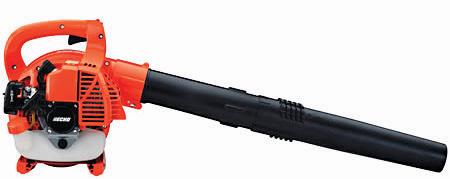

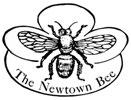












































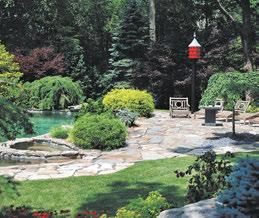
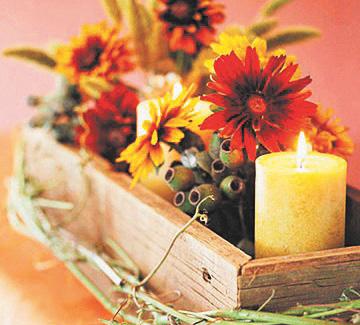
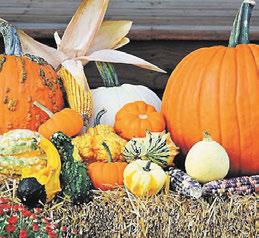









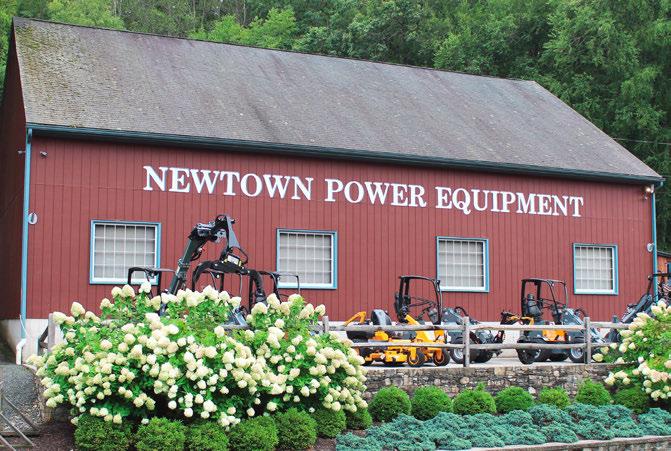
By Sam CroSS
Over the course of a rainy spring season or leaf-changing fall season, homeowners may notice a buildup of dirt, debris, and mold on their homes, especially where sun does not hit the siding. The folks at Newtown Power Equipment, 151 Mount Pleasant Road, explained some best practices and shared some tips
to help homeowners get started.
Greg Oliger, part-owner of Newtown Power Equipment, said the nice thing about a power washer is “you can use it anytime something becomes grimy or dirty and it bothers you … you can use it at your leisure.”
Power washers can be used to clean a multitude of items, such as decks, houses,

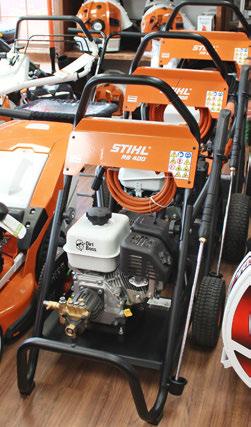
Newtown Power Equipment sells and rents Stihl pressure washers. Greg Oliger and Joe Letizia each offer pros and cons — and safety precautions — for homeowners considering taking on the job of power washing their home.
patio furniture, pool filters, and more. For those who are looking to clean their homes, Oliger said to not use bleach under any circumstances. Bleach can be damaging to the internal parts of the washer, or if the washer is not rinsed properly, residual bleach can damage other items that are meant to be cleaned. Oliger recommended rinsing the machine out entirely if it was used with a cleaner to ensure no residual material is left in the machine.
Safety Measures
“[A] power washer can be a dangerous tool if it’s misused,” Oliger said. “The most important thing is to have the proper safety apparel.”
Oliger recommended eye protection, closed-toe shoes, and gloves. He said if a power washer is being used to strip paint off a surface, the machine’s user should add a dust or particle mask to their safety apparel to keep debris out of their lungs.
“Most important thing before [homeowners] do anything is to read the owner’s manual and familiarize themselves with the machine because it can be a dangerous tool. The water that comes out under pressure can cut through things, including skin,” Oliger noted.
Joe Letizia, also an owner of the longstanding Newtown business, added that some manuals say to treat a power washer “like a loaded gun.” Oliger tacked on that homeowners should experiment a little bit with the machine and get a feel for it before they start using it regularly. As Letizia pointed out, carpet cleaners always recommend using it on an inconspicuous area before washing the whole surface.
Oliger also mentioned ladders and power washers can be a very dangerous combination.
“A lot of people, including myself, will take a pressure washer and climb up on a ladder and hit the trigger and not realize how much force there is coming out of that nozzle. When I was a kid, I almost blew myself right off a ladder with one of those,” he shared. “So safety is very important for first-time users.”

Oliger recommends first-timers start on the ground to get used to the machine. He also added that when washing a house, start at the top and work down to avoid spraying dirt over what was just cleaned. Other things to consider when a house needs a good washing are the pros and cons
of DIY work. Letizia pointed out that power washers can put a strain on well systems due to how much water they use in a short amount of time. Thinking critically about whether or not a private well can keep up with the demand is a crucial point in choosing to DIY or hiring a contractor.
“Sometimes you have to pick and choose your fight, if you will, because some things should be left to professionals who are insured,” Oliger said.
Letizia encouraged people to “stay in your comfort zone.”
Newtown Power Equipment’s Offerings
Newtown Power Equipment offers rental equipment and services all items it sells. Oliger said the store sells a wide range of lawn and garden equipment for homeowners, landscapers, and arborists. It is a onestop shop for all outdoor equipment needs “We’ve been here now for 44 years, so we’ve got some pretty deep roots at this point. We offer quite a few services, we service everything we sell,” Oliger said.
He expressed his adoration for the town. “Newtown’s a beautiful town. It’s nice to see that people do take care of their property and keep their houses looking so nice. You know, we’re lucky to live in this area.”
Oliger added customers can visit Newtown Power Equipment and find information, “or at least services,” that one cannot find on the internet.
Letizia shared, “A lot of times you come home for a week or a month at a time, and you see something you need to do in your yard … and it bothers you, but as soon as you get it done, when you come home the next day, it’s just like that satisfaction of having it done.”
Oliger ended the conversation by saying, “People hire people to do these things, and that’s all fine and well if you don’t have time, but when you do it yourself, you have that feeling of accomplishment. It’s nice to be able to go to town to some place like Newtown Hardware or to come here and be able to get advice from people and then decide whether or not you want to tackle that.”
For more information about Newtown Power Equipment’s products and services, visit newtownpowerequipment.com or call 203-426-5012
BETHEL — Hollandia Nurseries will present its 33rd Annual Yesteryear Farm Antiques Fall Festival the weekend of October 4-5.
All are invited to the family friendly event featuring antique cars, trucks, tractors, machinery & farm equipment.
Anyone is
There

to
Stony Hill Volunteer Fire Department will food for sale.
Festival hours are Saturday, October 4, 10 am-4 pm; and Sunday, October 5, 9 am-3 pm. Admission is free. The festival is presented at the nursery’s 103 Old Hawleyville Road location. For additional information call 203743-0267.
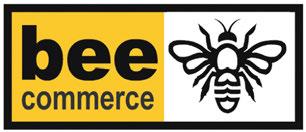



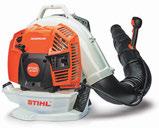










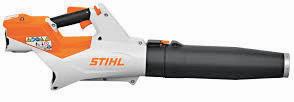





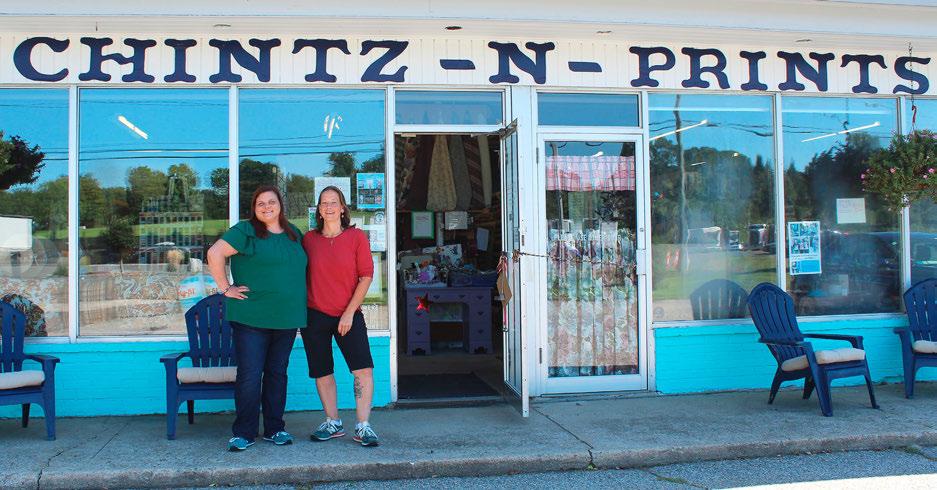
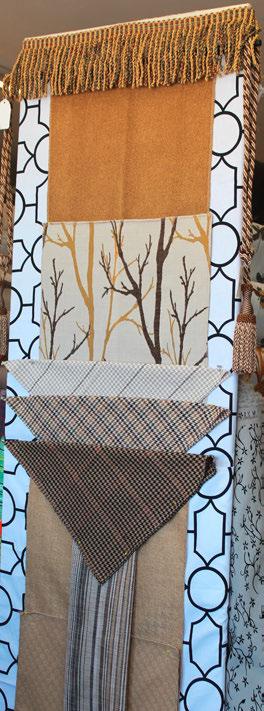
By Sam CroSS
The trends for fall have rarely budged over the past ten years, according to Art & Frame owner John O’Sullivan, but as he started to receive recent frame samples from his suppliers, he noticed a distinct shift when he began setting them out on display.
“These all just came in,” he said, pointing to a selection of metallic wood samples. In this selection were a bright metallic blue, a shining bubblegum pink, and a shimmering teal color.
“These aren’t the only ones that just came in that are colorful, that’s been the trend from everybody.”
O’Sullivan pointed out a few other frames with bright colors, including airy yellow and blue matte wooden frames and a bright green to top the sample grouping off. He explained that though people are still looking for a minimal style, the color is where things are changing. People are pushing away from the typical fall neutrals and launching into bright, bold, colorful styles.
Laura Gardner and Julianna Honea at Chintz-N-Prints said the same thing.
“I think we fall more into the neutral colors, the upholstery weighs a little bit heavier,” Garnder said. Honea added most people — but not everyone — like to bring in warmer colors for “a cozier feeling.”
“I had a customer yesterday who said she wanted bold, bright colors. They’re not afraid of colors,” Honea said.
Gardner added that typically customers have been afraid of colors and noted the trend of neutral colors that has found its home in the early part of the 2020s. Gardner thinks part of this reemergence of color is partly due to the COVID-19 pandemic and people being in their homes more now than ever.
“People wanna get out there, they
want to brighten things up. They want to be happier,” Gardner said. “I feel like everyone was hunkered down for quite some time and I think people are coming out now and more comfortable and confident and trying new things!”
Honea contributed some of the change to social media, pointing to the use of color by influencers. O’Sullivan thinks the change is a “pushback” from the relentless gray/brown/black neutrality that has dominated the fall season for so long.
“A lot of stuff was just white, white and black. We used to have so many things that were carved gold and silver … and that stuff all kind of died out. Supposedly, that’s a trend that’s coming back in Europe, but we haven’t
seen it here yet,” O’Sullivan said. Some of O’Sullivan’s other samples include beautifully speckled wooden frames that give a more rustic or livedin look that has been quite popular over the years. The green marbled with yellow and bits of red gives a weathered look many people look for, as does the rust-colored frame with bits of white shining through. A pastel blue, yellow, and purple frame sits in the mix, adding a bright pop in an otherwise routine color palette.
“For me, there’s no hard rules … that’s the same with any kind of art, every rule is meant to be broken at some point. Rules are good as a general guide, and then you throw them out the window when they don’t work,”


O’Sullivan said with a laugh. “At this point, I’m ready for this color change.”
O’Sullivan has a selection of over 5,000 frames. The stock at Chintz-N-Prints is similar, with some bolts of fabric dating back 40 years, making it easy for customers to connect with their past while propelling their homes into the future.
Honea said a lot of customers are “embracing the vintage side” of fabric. Gardner added that it is “wonderful” to see vintage fabrics being used.
“We have a lot of people who come in here and they see a fabric and it reminds them of their grandmother … their past, and that’s what they want to go for. They want to replicate that, so they have something familiar. They get so excited when they see the same fabric from when they were a kid,” Honea said.
Gardner and Honea both agreed that people are yearning for colors right now and looking to add more to their homes to create happiness and to tend to their mental health. As Gardner mentioned, she thinks people are spending more time in their homes and want to create a space that is comforting and inviting.
“Sometimes that cookie-cutter feel is just too bleh,” Honea said. “But that’s how you stand out, that’s how you remember something. Being outside the box.”
Though the samples from Art & Frame are bright and bold, the first autumn display at Chintz-N-Prints sticks to the trends that everybody knows: it has browns, golds and tans mixed together with a fluffy neutral trim decorating the top of the display. Despite the typical nature of this display, Gardner and Honea promise the shop is ready to handle any customer’s needs.
Gardner firmly stated the shop’s mission, “We’ve been here since 1957. I mean, we’re known, we’ve been here, ups and downs, we’re consistent, we’re passionate, and we care. We care about our customers. We want them to be happy. Customer service is very important. No project is the same, everyone’s different, everything is custom.”
Gardner and Honea are willing to help and work with each customer individually and walk them through each process, just like O’Sullivan does at Art & Frame. O’Sullivan said he takes each

piece into consideration with no set color scheme pre-planned.
“For me, I always take each individual piece. There’s not a cookie-cutter thing for me. One of the reasons I have way too many frames compared to most places is because I wanna have that justright thing every time,” O’Sullivan shared. He tries to strike a balance between colors in the paintings and photographs and the frame, making sure the dominant colors do not appear in the frame and overpower the other, more subtle colors hidden in the art piece.
Stop in to both stores, say hello and talk shop — anyone on either staff will be sure to quench whatever artistic thirst readers may have. Find Art & Frame online at artandframeofdanbury. com or visit the store at 77 Main Street, Newtown; and Chintz-N-Prints at chintznprints.com, or visit the store at 39 South Main Street, Newtown.
Reporter Sam Cross can be reached at sam@thebee.com.







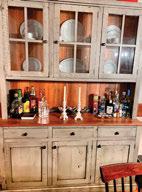



custom furniture since


(StatePoint) Just because fall is here doesn’t mean your backyard fun has to end! Fall is the perfect season to breathe in crisp air, sip something warm under the stars, watch an outdoor movie, and make the most of your outdoor setup. With the right tools and a few seasonal upgrades, your backyard can stay the place to be long after Labor Day.
Here’s how.
Blow Away the Mess: “Leaf” It to the Pros
Those golden leaves look lovely on trees, not so much on your lawn. A good leaf blower (especially a cordless or battery-powered model) like the Greenworks 80V Cordless Leaf Blower can keep your yard tidy and pathways safe.
But to take it up a level, look no further than the Mammotion Yuka robotic mower with sweeper kit. It doesn’t just trim your lawn, it also collects fallen leaves as it goes.
Bring the Heat: Stay Toasty on the Patio
With propane or electric patio heaters, you can keep the chill at bay and enjoy those al fresco dinners well into the season.
Try the Dr Infrared Heater Outdoor Patio Heater for electric convenience or the Hampton Bay 48,000 BTU Patio Heater for classic propane warmth.
Cover Up: Furniture that Survives the Season
Fall weather can be unpredictable, but with water-resistant covers for patio chairs, tables and lounge sets, your stylish setup won’t suffer. Brands like Vailge and Duck Covers make highly rated all-weather options in multiple sizes and styles.
your pool, clearing it of fallen leaves, bugs and branches.
Backyard Movie Magic: Outdoor Projectors
Cooler nights are made for blankets, popcorn and movie marathons under the stars. Outdoor projectors turn backyards into a private cinema. One of the best is the Valerion Vision Master Pro 2, which delivers ultrabright, cinematic 4K laser projection even in ambient light.
Fall Clean-Ups are Easier with the Right Tools
Pressure washers, trimmers and gutter vacs are great tools to prep your home for colder months. The Sun Joe SPX3000 Pressure Washer is a fan favorite.
When paired with a gutter cleaner like the WORX Universal Gutter Cleaning Kit, you’re ready for seasonal upkeep.
Don’t Let Mishaps and Malfunctions Ruin Your Fall Fun
Outdoor gear works hard all year — but colder weather puts added stress on everything from leaf blowers to lounge chairs. When something breaks, it can be expensive to replace. The good news? Many of these items can be protected. The surprise? Most Americans don’t know it.
An Allstate Protection Plans survey found: Only nine percent know patio tables can be covered; just seven percent know about patio chairs and umbrellas; only six percent realize lounge chairs qualify; and awareness is also low for leaf blowers (34 percent), robotic pool cleaners (28 percent) and patio heaters (22 percent).



Pool Days Aren’t Over Yet
If you’re one of the lucky ones with a pool, you might be able to stretch swimming season into September, especially with a pool heater.
A reliable robotic skimmer like the Bublue BuVortex V5 will spin around
Don’t wait for a breakdown. A protection plan helps keep backyard essentials working longer and saves you from surprise repair costs.
Visit allstateprotectionplans.com for more fall outdoor living tips.
By performing a few maintenance tasks and protecting your gear, you can stretch backyard season into sweater weather.
With the right knowledge, raising chickens can be a fun and rewarding experience for the whole family. C.H. Booth Library will host a virtual program with Mark Gostkiewicz on Wednesday, September 24.
The informative workshop will run from 6 to 8 pm via Zoom.
Attendees will look into the world of backyard chicken keeping and discover
the joys of having their own feathered friends. Gostkiewicz will cover what is needed to start and maintain a happy, healthy flock of chickens, all while using sustainable and organic practices. Among the topics will be choosing the right number and breed of chickens for a backyard, where to source chicks and adult hens, raising chicks into healthy layers, selecting the perfect coop and run
MONROE — Readers are invited to celebrate the beauty of nature by taking a guided nature walk around Great Hollow Lake in Monroe on Friday, September 26, starting at 10 am (no raindate).
The free walk, led by Lou Picchione and Linda Dunn of Newtown Hikers, will be tailored to the abilities of the participants, and seniors are greatly encouraged to sign up. The walk is part of Timeless Newtown’s series of free events; Newtown Parks and Recreation

and Newtown Hikers are the sponsors in partnership with C.H. Booth Library.
Fall is a great time of year to stroll through one of the many easy paths in gorgeous New England. Of course, there are many benefits to being out in nature — physical, emotional, spiritual, and mind health. Bring a friend or make some new ones. All levels are welcome.
Sturdy shoes are recommended; bring a water bottle. Participants will have the chance to try out walking poles and ask experienced walkers questions while enjoying walking on the wide dirt path around Great Hollow Lake.
Those planning to join Picchione and Dunn should meet in the parking lot near the concession stand by Great Hollow Lake, 454 Purdy Hill Road in Monroe. From Newtown follow Route 25 South, take the left onto Purdy Hill Road in Monroe, then left onto Silverstone Drive to the lake’s parking lot. There is no fee to access this park after Labor Day.
Registration is required and space is limited to 12 participants. Sign up at chboothlibrary.org or by calling 203426-4533.
for a flock, efficient ways to feed and water chickens, designing a coop that suits the needs of chickens, how to involve the whole family in the care of chickens, and pros and cons of various coop and fencing options.
Following the class, Gostkiewicz will provide materials and links to products that are both economical and of good quality.
Gostkiewicz is the co-owner of Tri Gable Lea Farm in Colchester. His passion for sustainable farming began with his first job at the certified organic Highland Thistle Farm in Canterbury, where he learned about holistic management and sustainable practices. He later worked at Hart's Greenhouses, where he was inspired by the successful farm business run by Dave and Joyce Hart.
He and his wife started working their own gardens when they moved to Gostkiewicz’s family farm in 2008. As their children were born, they planted orchard trees to mark their birth years.
In 2018 they started teaching classes on the farm and building chicken coops to support local families in their homesteading efforts. In 2020 they started offering their classes online to reach more people and continue to spread their knowledge.
They have transformed their homestead into an agricultural education center for home gardeners, homesteaders, children/families, and market gardeners. Registration is required for the Booth Library program, and available through chboothlibrary.org. The Zoom link will be emailed prior to the workshop.

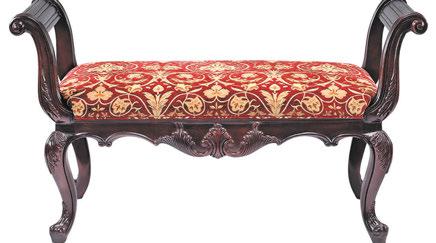



















B y J enna V i SCa
Your home is more than just a place to live, it is where you create memories, unwind, and feel most comfortable. Yet many household items and systems can hide potential safety risks.
Safer spaces for people of all ages can be created by identifying and addressing potential hazards early, according to Christine Reed, fire and disaster mitigation program manager at the International Code Council (ICC).
As part of the recent ICC Building Safety Month campaign, Reed is sharing basic tips for at-home electrical safety, fire safety and more.
Electricity is a daily part of people’s lives, but it also comes with dangers all its own. A report from United States Consumer Product Safety Commission states there are 31,000 fires and 200 deaths involving home electrical systems each year. Staying on top of electrical safety measures, from managing power strips to updating wiring, allows people to go about their daily lives while keeping their loved ones safe.
Manage power strips and extension cords
Proper use of power strips and extension cords is essential. Avoid overloading and make sure cords are never hidden under rugs or furniture.
To keep electronics safe from electrical surges and help prevent potential fires, utilize power strips with built-in surge protection that will trip if overloaded.
Inspect electrical cords . Inspect electrical cords for fraying, cracking insulation or wire damage to prevent future issues.
Replace worn-out cords right away. Modernize wiring.
If a home is 30 or more years old, have the wiring evaluated or updated by a licensed electrician.
Modernizing an electrical system can increase safety, reduce energy costs, and prevent potential hazards.

Neglecting to take care of plumbing pipes, a water heater, and ventilation can lead to water damage, sediment build up, and even mold growth. Taking precautionary measures will not only circumvent these issues, it can also lessen the stress and high costs of arranging repairs.
Fire Safety Cooking is, by far, the leading cause of home fires and home fire injuries, according to the US Fire Administration.
Newtown Fire Marshal Richard Frampton said people will leave often food cooking unattended on the stovetop, only for it to quickly escalate into a house fire.
“It’ll boil over or burn the pot, and before you know it, the cabinets are on fire,” Frampton explained.
Other common causes of local home and structure fires include electrical issues and dirty chimneys.
Frampton encouraged people to have their own “routine procedures” for fire safety. These can range from someone cleaning their chimney or dryer filter after each load of laundry to servicing their furnace when they are able to.
Additional suggestions from the US Fire Administration include the following:
—Wirestock photo
Keep escape routes clear.
Having clear escape routes and an action plan is critical.
Ensure that evacuation pathways, like hallways and in front of windows, are free from obstructions.
Practice periodic fire drills so everyone knows exactly what to do and where to meet.
Reduce clutter.
Keeping combustible items, such as paper, towels and other clutter, away from heat sources like stoves, space heaters and fireplaces can significantly reduce the chance of an accidental fire igniting.
Maintain smoke alarms and fire extinguishers.
Smoke alarms save lives. Test them monthly and replace the batteries semi-annually or replace any smoke alarm equipped with a built-in tenyear battery after the ten-year timespan has passed.
Store fire extinguisher near, but not
immediately next to, heat sources like stoves and water heaters, and keep the extinguisher’s periodic service tag current.
While the State no longer hands out fire alarms or CO alarms to Fire Marshal offices for distribution to residents, Frampton said people can buy them at local hardware stores or large-chain retailers such as Home Depot or Costco.
Use lithium-ion batteries properly.
Lithium-ion batteries, the rechargeable batteries common in portable devices, should be handled with care. Follow the manufacturer’s guidelines for charging, storing and disposing of these batteries, including using the charging cord that comes with the device.
While charging, keep the device out of evacuation paths.
It can be easy for home maintenance to take a back seat to the hustle and bustle of daily life.
Neglecting to take care of plumbing pipes, a water heater and ventilation can lead to water damage, sediment build up, and even mold growth, however. Taking precautionary measures will not only circumvent these issues, it can also lessen the stress and high costs of arranging repairs.
Small leaks can quickly become big problems, leading to water damage and mold. By checking plumbing pipes and fixtures regularly and addressing leaks right away, most homeowners can avoid major health risks and costs, and ensure water systems are running efficiently.
Bill Hegenauer, owner and operator of Bill Hegenauer LLC Plumbing Services in Newtown, said drainage pipes starting to fail and deteriorate can cause leaks that lead to mold issues depending on the age of the house.
“If you have a house that has acidic water and you’ve never treated it, the longer that goes, the more likely you are to encounter possible pinhole leaks and things of that nature,” Hegenauer said.





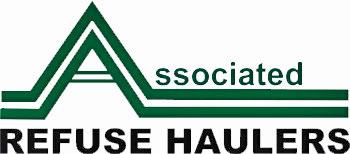
He added it is “incredibly important” for someone to test their water and see if they have any underlying conditions if they have well water.
“ Most insurance companies don’t cover the plumbing work, they only recover the repair of the damages from the leak,” Hegenauer explained. Water heaters are often overlooked, but keeping them updated can save you time and money. Flushing a water heater annually removes sediment buildup, helping it run more efficiently and prolonging its lifespan.
Hegenauer said the biggest concern for outdated water heaters is that once they are past their warranty, they are no longer covered by the manufacturer. Outdated water heaters can sometimes even impact insurance coverage, he noted.
“A lot of people don’t realize that, if you get flood damage from something like that, the insurance company typically doesn’t cover the plumbing end of it. They only cover the repair of the damages from the leak,” Hegenauer said.
People can save themselves a lot of money by staying ahead of the game on their water heater and making sure it is working accordingly.
To prevent a big mess with a water heater, Hegenauer suggests using a battery-powered water alarm, akin to a smoke detector but for water leaks. With these systems, many of which are inexpensive, an alarm sounds if a water leak begins. Early notice, especially for those with a finished basement, does not need to be costly.
By maintaining proper ventilation in damp areas like bathrooms and basements, property owners can also prevent mold growth and improve a home’s air quality. Use dehumidifiers
or exhaust fans where needed and keep an eye out for dark spots or musty smells.
Hegenauer said there are many other ways homeowners can stay prepared for plumbing and similar issues. For those with acidic water, he suggests installing and maintain a pH neutralizer. People can also check their system to make sure their water is potable, meaning it is safe to drink and be used to prepare food with.
“Besides that, you’ve got to keep checking on your system. How old is your well pump? How old is your water tank? These are things that you don’t want to fail in the middle of winter and cost a lot more to replace than to repair. It’s important to stay on top of those things before they fail unexpectedly and become an emergency,” Hegenauer said.
He added it helps to have a plumber come out and look at the general health of their water system.
Cooling weather doe not automatically mean people stop spending time in backyards. Maintaining backyard safety helps protect children and adults alike from potential injuries or poisonous plants.
The more precautions people take when it comes to backyard safety, the more time they can spend having fun with their loved ones.
Install a fence around the pool with a self-locking gate and safely store pool chemicals out of children’s reach. An adult should always supervise children in a pool to ensure the safety of the young swimmers and peace of mind for the adults.
Outdoor play equipment, grills, and yard tools should be checked regularly to maintain safe use. Ensure play

residents can learn more about fire safety
Office, located in Newtown
Office has several different pamphlets that people can take home to learn about general fire safety, preparing pets for emergencies, holiday hazards, and more.
structures are stable and free from sharp edges or rust, and keep tools securely stored to avoid accidental injury.
Keep grills clean of grease buildup to reduce flare-ups.
Reed said homes and buildings that have been updated to the latest building codes are better equipped to minimize the possibility and mitigate the
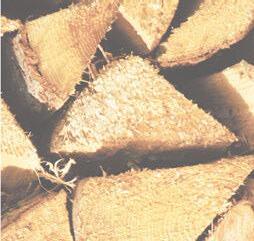

effects of fire and other risks.
“Simple, proactive actions can help ensure continued safety and happiness of your family,” she said.
For more fire, water and electrical safety tips, as well as tips for disaster preparedness and sustainability, visit iccsafe.org . This article utilizes content from StatePoint.net.








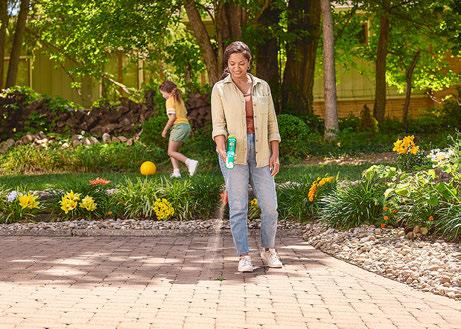
(StatePoint) As the back-to-school frenzy kicks in, it’s easy to get caught up in all that goes along with prepping for a new school year. But before the homework and after-school activities take over, remember to save some time for soaking up the final days of warm weather.
Your backyard can be more than just an outdoor area. With help from products like Spruce, it can be a welcoming retreat for your kids, pets, and family memories. These quick tips will help you get the most out of your outdoor space so you can enjoy the final dog days of summer.
Before They Play, Make Sure It’s Okay
Outdoor toys, sports equipment and play sets have been the real summer superstars. But sun, rain, and repeated use can cause wear and tear. Inspect equipment for loose bolts, splinters, rust, or cracks. A few minutes of maintenance now can help keep playtime injury and stress-free.
To make sure everyone has a great time in the backyard, it’s a good idea to create specific areas for both pets and kids. For your four-legged friends, set aside a grassy space for them to run and play with some soft balls and tug toys. For kids, a designated paved area is a great place for riding bikes and scooters or getting creative with chalk art. Having these specific zones gives everyone a chance to burn off much needed energy.
Actively addressing weeds creates a more enjoyable environment for everyone. When it comes to tackling them, Spruce Weed & Grass Killer can help you get the job done without ending play time. The hardworking and worry-free weed and grass killer is easy to use and safe for use around people, pets, and bees, when used as directed.
Since Spruce works on contact, you’ll see results in as little as an hour. Once it’s dry, kids and pets can get back to playing, making it easy to quickly get your yard ready for one last backyard hang.
The back-to-school transition can feel hectic, but carving out time to maximize your outdoor space now means getting more time to savor these final warm days. It’s a simple way to enjoy the season’s last moments and help your kids start the school year refreshed, energized, and ready to thrive.

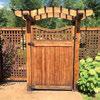


Autumn can be a beautiful time in the garden. Many native plants are not only striking in this season but also provide critical resources to pollinators, birds, and mammals.
Perennials
Monarchs are not the only species of butterfly to migrate; several others, including the red admiral, common buckeye, painted lady, and question mark, also migrate — although not as far. Late-blooming perennials offer critical nectar sources for these hungry travelers.
Asters are considered a keystone plant for the extraordinary ecological benefits they provide. Different species bloom from mid-summer to frost.
An excellent late-blooming aster for the home garden is frost (or hairy) aster, Symphyotrichum pilosum. Frost aster has white flowers and grows two to four feet high. New York aster, Symphyotrichum novi-belgii, produces blue-violet flowers from August to October and grows three to four feet high. It prefers moist soils in full sun but can take part shade.
Goldenrods are another keystone genus. They are host to many lepidoptera, attract scores of specialist bees, provide late-season nectar, and produce seeds that feed songbirds. Different species grow in a wide variety of conditions, from moist woods to sand dunes. Goldenrods do not cause hay fever because they are pollinated by insects, not wind. Ragweed, which blooms at the same time as goldenrod and is wind pollinated, is the culprit.
Wreath (or bluestem) goldenrod, Solidago caesia, blooms from August to October and grows to three feet high. It takes full sun or part shade.
Gray (or old field) goldenrod (Symphyotrichum nemoralis) grows to two feet high. It is good for difficult spots such as poor, rocky soils or clay. It prefers full sun but will take part shade and can be an effective groundcover.
Grasses
Fall is the time for native grasses to shine. Often most striking when they are planted in large drifts, their foliage supports the larvae of many butterflies and moths, and their seeds feed birds. Some birds nest in native grasses.
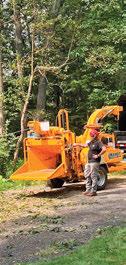
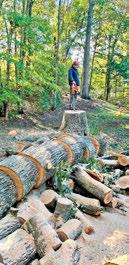




Shrubs
Numerous native shrubs are valuable to pollinators and birds all year but also are beautiful in fall. Here are just a few:
Common witch hazel (Hamamelis virginiana), which blooms in November, has a fascinating history in Connecticut and is still farmed here for its extract.
Witch hazel grows 15 to 20 feet high and is best suited to the woodland garden, although it can be grown in full sun. Its fragrant, yellow flowers appear after the leaves have fallen.
Other shrubs sport wonderful fall color and/or berries in fall. Red and black chokeberries (Aronia arbutifolia and melanocarpa) have scarlet foliage and either red or black fruit.
New England aster, frost aster and Canada goldenrod grace a garden path.
Purple love grass (Eragrostris spectabilis) displays a cloud of mauve flowers in late summer and fall. It grows to two feet high in sandy soils.
Pink muhly grass (Muhlenbergia capillaris) — endangered in Connecticut — bears plumes of showy pink flowers in fall. It prefers dry, rocky soils, and grows to three feet.
Little bluestem (Schizanchrium scoparium) has bluish foliage changing to russet in fall, with silvery flowers that are stunning when sunlight shines through them. It grows to four feet high.

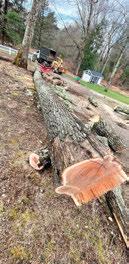
Highbush and lowbush blueberries (Vaccinium corymbosum and angustifolium) also show brilliant red foliage in fall and bear delicious blue fruit earlier in the year.
Spicebush (Lindera benzoin) turns a luminous yellow in the fall. On female plants bright red fruit feeds songbirds.
Space does not permit us to mention any of the native trees that make our New England landscape so captivating in fall, but if you have room for trees in your garden, many native ones will delight you with their beauty and will benefit hundreds of native insects and birds. Here’s wishing readers a lovely autumn in your gardens.
My Backyard Habitat is published monthly in cooperation with The Newtown Bee by Protect Our Pollinators. For more information or to reach us, visit propollinators.org

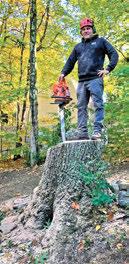
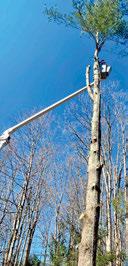
Newtown Conservation Commission


The spotted lanternfly (SLF) is a destructive sap-feeding plant hopper . SLF is a relatively new plant pest to the United States. While just two small populations were verified in Fairfield County in 2020, it is now found across the state and widespread in Fairfield and New Haven counties.
A pretty distinctive insect, adults are about one inch long and a half inch wide. Their forewings are tan with black spots. Hindwings, noticeable when wings are spread, are colorful red and black patches separated by a white patch. Adults are active from July to November and will crawl, jump, or fly short distances.
Invasive tree of heaven ( Ailanthus altissima ) is the preferred food source (host plant) for the spotted lanternfly. This rapidly growing deciduous tree has become a widespread
invasive species across North America. Also known as stinking sumac or Chinese sumac, it was introduced to the US as a horticultural specimen and shade tree. Rapid growth and abundant seeds allow it to spread aggressively to create dense thickets that displace native vegetation. It also secretes a chemical into the soil that is toxic to surrounding plants.
While the spotted lanternfly is attracted to tree of heaven, it also feeds on economically important plants including grapevines, ornamentals, and native trees such maple, black walnut, birch and willow. Feeding damage significantly stresses plants, impacting health with potential for causing death. For additional information, go to the Connecticut Agricultural Experiment Station and search “spotted lanternfly.”


Protect Your Property And Trees
CT Agricultural Experiment Station says the best thing a homeowner can do is rid their property of tree of heaven, so as not to attract spotted lanternfly.
Local arborist Mike Switser of North Country LLC is among those locally who are fully licensed with expertise in proper management.
How To Identify Tree
It is important to correctly identify tree of heaven. On first glance, it appears similar to some native trees and shrubs that also have leaves arranged in pairs along a plant’s stem (staghorn sumac, hickory and black walnut).
TOH is distinguished by a notch at the base of each leaf, fuzzy, reddish-brown twigs, and clusters of light green seed pods.
If all else fails, there is the unmistakably strong, offensive smell of its flowers, leaves and stems when crushed, resembling burnt peanut butter.
If displacing native vegetation, threatening natural ecosystems, and attracting a destructive pest isn’t harmful enough, tree of heaven, with its aggressive root system, can also damage pavement, sewers and wells, and building foundations.
According to Penn State Extension, cutting alone will not reduce tree of heaven’s ability to spread; in fact, it could make it worse. Pulling TOH out can also activate the root system, causing it to send up more shoots to create new trees. The best method is to target the roots with a systemic herbicide applied mid-to-late summer until onset of fall color when the tree is moving carbohydrates to the roots. Herbicides can be applied to foliage, bark, or cuts on the stem, also known as hack and squirt.
Cut stump herbicide applications do not prevent root suckering and should not be utilized, however. Herbicide applications made outside this late growing season window will only injure above ground growth.
As always, employing the help of a professional licensed pesticide applicator is recommended. For more information, go to Penn State Extension and search “Tree of Heaven Control Strategies.”
Newtown Conservation Commission is actively working to encourage healthy habitats and increase the diversity of our native wildlife and vegetation. Visit newtownconservation.org.
As summer winds down, long stretches of sunlight are dwindling and cooler temperatures are on the horizon. Gardening enthusiasts may wonder how they can manage their backyard gardens as the peak growing season comes to a close.
People may not be eager to do much in their gardens come August, particularly because the air may be hot and the dew point high. And spending the final days of summer at the beach or in the pool may take priority. However, late summer is a great time to focus on certain tasks.
Many plants look better with the wilted flowers removed. Furthermore, some plants, such as with lilies and roses, will benefit from having spent blooms removed so that no unnecessary energy is drawn away from the roots or bulbs. Research your plants and learn which can benefit from some late-summer deadheading to keep them thriving.
Weeds can become problematic if they’re allowed to grow unabated. Routinely go into the garden and cull the weeds.
Keep an eye open for pests
According to Garden Smart, caterpillars and beetles may be chewing on garden plants by late summer, and aphids still may be problematic. Handpick insects off of vegetables and ornamental flowers, or use safe sprays for treating these issues.
Plant cool weather vegetables
Many plants will grow well when planted in late summer, according to Homesteading Family. Some such plants include turnips, beets, carrots, kale, chard, mustard greens, and peas. You can begin turning your summer garden, or a portion of it, into a fall and winter garden.
Consider succession planting
Growing vegetables like beans or peas may be more successful if you try succession planting. This involves sowing new seeds every seven to 10 days to extend the harvest.
Harvesting what’s ready
Pick vegetables that are ready to eat, and remove any plants that have reached the end of their growing cycle.
Convert planter boxes and containers
This is a good time to start changing over summer annuals in containers and planter boxes to those that do well in fall, such as mums, asters, pansies, and goldenrod.
There’s plenty of work to be done in the garden come the end of summer.

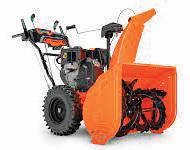
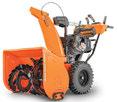
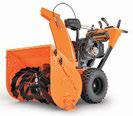



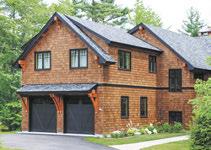
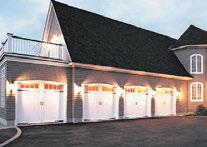
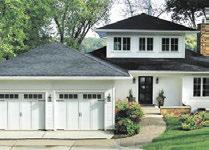

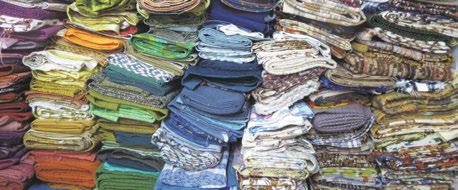
(StatePoint) Fall and the start of a school year ushers in new messes and less time to tackle them. But you can stay ahead of dirt, clutter, slime and grime with these innovative tools and strategies:
Power Through Messes Busy households, especially those with kids and pets, can benefit from a powerful cleaning tool that makes everyday floor care faster, easier and more efficient. That’s where solutions like the Tineco GO H2O HammerHead MessDetect, available at Target, come into play. A three-in-one mop, vacuum and self-cleaning system, its versatility and ease of use will encourage you to make quick daily passes in hightraffic zones so that even with little ones and furry friends tracking in dirt, you can keep the home spotless. Dust bunnies and after school snack crumbs have finally met their match thanks to its lay-flat design and 128-degree swivel brush, which let you reach under low-clearance furniture without heavy lifting. Plus, the bacteria-resistant Zero Tangle Brush tackles pet hair effortlessly. The brush, paired with an anti-odor solution, help keep your home smelling fresh.
There’s a reason Tineco is found in over 19.5 million homes. The brand is constantly improving its products. The GO H2O Hammerhead Mess Detect features a 60% larger water tank than previous models, a cordless 30-minute runtime, and battery-saving smart MessDetect Technology that automatically adjusts cleaning power and water flow based on dirt levels, so you can clean your whole home without interruption, and cut down on time-consuming refills and recharges. With an LED screen that complements cleaning, displaying mess detection and cleaning progress, you can stay informed as you go. Plus, maintenance is simple. When you’re done, place the unit on its dual self-cleaning and charging dock so it’s fresh and ready for the next use.
Optimize Kitchen Tasks
Smart technology is helping hectic households streamline cooking and cleaning tasks for fresher, more organized kitchens. Certain smart fridges feature internal cameras connected to an app. These allow you to view the contents of your fridge so you can meal plan from anywhere — your workplace, the school pickup line, the grocery store — before even walking in the door. They can also help you stay on top of lingering items, and avoid unpleasant leaks and odors in hard to reach spaces.
Today’s latest dishwashers are also saving parent-chefs time and energy on busy weekdays. Embedded AI technology detects how soiled a dish is and adjusts settings accordingly, eliminating the need for pre-rinsing. On the tail end of a cycle, AI is optimizing drying so that dishes come out of the machine ready to be stowed. The best part? These functions can be operated remotely. Using a connected smartphone to run the dishwasher, you can return home to clean dishes, giving you more time to help the kids with their homework, prepare dinner and relax.
Get Help, But Make it Fun
One of the best ways to manage messes is by recruiting the entire family to help. To make it fun, engaging and streamlined, use an app like Sweepy. In addition to organizing a cleaning schedule for you based on your availability, and helping you prioritize what tasks needs to be undertaken first, the app also gives you the option of gamifying household chores. Simply add household members to the app, assign them tasks to complete, and have them compete for a spot on the leaderboard, so that cleanup is something that kids will actually look forward to!
This back-to-school season, don’t let messes get the better of you. With new tools and smart strategies, you can tackle everything from grass-stained sports uniforms to mountains of school clutter with ease.

(StatePoint) From updating an outdated kitchen to adding a home office, home renovations can be exciting. Before you dive in, it’s critical to understand the local safety requirements that impact your projects.
The International Code Council’s annual Building Safety Month campaign raises awareness about the role that building codes play in keeping us all safe and the important work done by building safety professionals, including those in your local building department. Kevin McOsker, the Code Council’s vice president of technical resources, offers advice to help you renovate safely:
Before beginning any home improvement project, you’ll want to meet with your local building department. They can walk you through local building codes as well as the process for obtaining permits and inspections. Failing to meet the requirements outlined in the code can result in unsafe living conditions, failed inspections or costly rework.
To contact your local building department, start with your city or county’s official website and look for the building or planning department. You can also call your city hall or visit in person.
Remember, building departments want to help make your project a success. Some building departments even have approved details and drawings to assist you with simple permits, construction and inspections.
When reaching out, ask:

Do I need a permit for this type of work?
How much does the permit cost? Are there specific code requirements in my area?
How do I schedule inspections and when should they happen?
Next, Secure a Permit and Inspection
A building permit is an official approval that allows you to proceed with a renovation or construction project. Permits are crucial because they ensure your project is safe and in
compliance with local building codes and regulations. These regulations are designed to keep you safe from hazards inside the building as well as protect you from extreme weather events.
Skipping the permit process can lead to additional fees, stop-work orders or even complications when selling your home. In some jurisdictions, it may even be a misdemeanor offense that could carry significant fines.
Once you’ve secured a building permit, you’ll need an inspection. Building inspections are an official review










of your renovation at key milestones during the construction process. They’re conducted by a certified professional to confirm that the work being done complies with local building code requirements.
Common Home Renovation Mistakes
Skipping Permits to Save Time or Costs: Skipping permits often leads to greater expenses later if you are fined, assessed additional fees or could even require you to redo completed construction work at your expense.
Assuming Minor Changes Don’t Require Approval: Even small updates can greatly impact safety and need permits and inspections.
Hiring Unlicensed Contractors: They may not follow the code, have no license to perform the work, and usually do not carry any insurance, which puts your project and your home at risk. Licensed contractors are accountable to the licensing board, just like your doctor.
Failing to Schedule Necessary Inspections: Without a final sign-off, your project may be considered incomplete, non-compliant or worse — create an unsafe condition.
Use Building Safety Professionals as a Resource
By working with your local building department, you can ensure your project meets standards, avoids legal issues and creates a safe space for everyone in your home.



































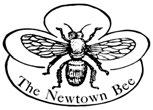

(StatePoint) One of the hardest parts of home remodeling can be simply getting started. With so many styles, colors and materials to choose from, it’s all too common to experience decision paralysis. Rather than put off your exterior renovation further, consider these tips and tools for nailing down the details.
Online tools can both help you bring your vision to life — and decide what that vision is. ProVia’s Design Center is an innovative tool that lets you browse and save colors, coordinating palettes and product images. As you explore the color palettes page, which features color wheels representing unique palettes, along with suggested product colors and inspirational imagery, keep these factors in mind:
*Architectural style. Understanding the features that define your home’s design style is essential in color selection. For instance, a colonial-style home may look best with classic, neutral colors, while a modern-style home might benefit from bold, vibrant accents.
*Landscaping and surroundings. Look to your surroundings for inspiration, selecting colors that harmonize with your landscape to create a cohesive and visually appealing look.
*Color psychology. Colors have the power to evoke specific emotions and moods. Think about what you want guests to feel when they come to your front door, or what you want to feel each time you pull into your driveway. For instance, warm colors like red and yellow can create a welcoming and energetic feel, while cool colors like blue and green can create a sense of calm and tranquility.
Signing up for a My Design account at provia.com/register allows you to cre-

ate and save your own vision boards, so you can compile your favorite ideas in one place.
“In addition to any color palette images you’ve saved, you can ‘favorite’ other images on the site by clicking the heart in the upper right corner. Use your saved images to create whatever you want, whether it’s a board with just entry door ideas, or a board to visualize your favorite colors together,” advises Jennifer Kline, digital experience supervisor at ProVia. Are you more of a big-picture person, preferring to see how all the parts fit together as a whole? It can be hard to imagine how your home will look by holding up a siding color swatch or trying to visualize a new metal roof to replace your worn-out asphalt shingles. This inability to “see” the finished result in your mind’s eye can be frustrating. Fortunately, the ProVia Visualizer tool enables you to preview colors and styles on your home, so you know exactly how it will turn out. Simply upload a photo of your house and then experiment with products. Get creative with door and window configurations, siding styles and shades, stone profiles and grout colors, and metal roofing options.
“Purchasing home exterior products is a big decision, which is why it’s nice to visually try before you buy. The ProVia Visualizer lets you preview different design and product selections so you can move forward with your project with confidence,” says Kline.
While the endless possibilities of a home renovation can be exciting, they can also make it seem overwhelming. Fortunately, increasingly sophisticated digital tools can help you define your style and see your vision through.
This fall season, keep your home
with the area’s best vacuums & central vacuums. Savings throughout the store!


PB-9010H


• World’s most powerful packpack blower
• Exclusive vented back pad circulates air around user
• Heavy-duty padded backrest and shoulder straps for comfort
• 79.9 cc professional-grade, 2-stroke engine
•1,110 CFM and 220 MPH
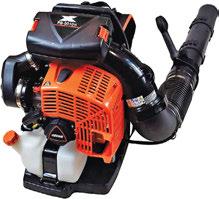




10/31/25
• Industry’s best combination of air speed and air volume
• 63.3 cc professional-grade, 2-stroke engine
















